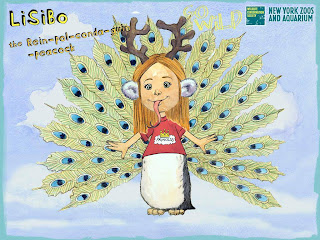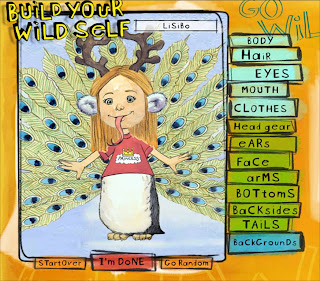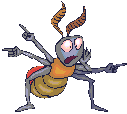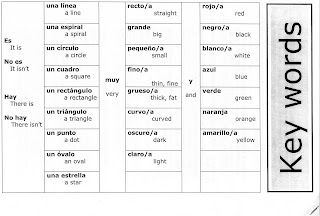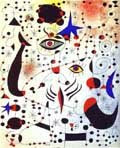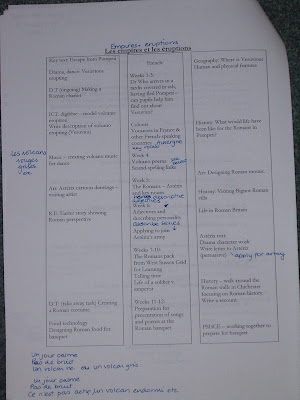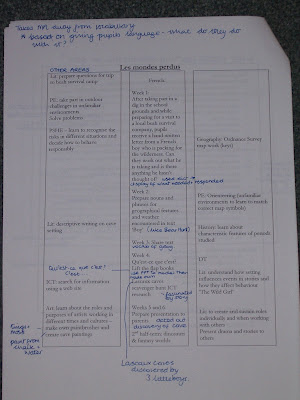
Jane Halsall, Primary Advisory teacher for Liverpool and Maria Romeo, a FLA in Liverpool have worked together to develop some ideas for linking PE and MFL. Maria is a trained PE teacher in Spain and brings lots of ideas for warm ups and spontaneous ideas that can link areas of the curriculum. Examples in French and Spanish.
Sardinas en lata
Pupils move around the room as instructed
eg walk / andad, jump / saltad, run / corred. Teacher calls ‘Sardinas en lata de … / Get into groups of…. ’ and pupils have to get into a group of that number; you could get the pupils to lie down head to toe like a can of sardines.
Hoops
Spread different coloured hoops around the hall. As a warm up, name parts of the body as practice
French rap – tête bra main doigt jambe pied et dos de dos
Yeux nez bouche oreilles et stomach.
Pupils move around the room – Marchez vite / lentement / par tout on y va marchez
Dansez
Leader says part of body and pupils put that part of the body in the hoop eg pied (gauche), nez, stomach
After a bit, use colour of hoop in which to put part of body eg pied, rouge; oreille bleu
Julie, c’est quelle couleur?
Coloured cones to mark the designated area, then hoops (or other coloured objects) spread around the room.
One child is ‘Julie’ or ‘Julien’
Group say ‘Julie, c’est quelle couleur?’
Julie says a colour – all touch that colour and Julie tries to catch someone.
If she does, they become Julie o Julien
You could add instructions for saying the phrase eg Plus fort / Comme un elephant etc
Can be adapted to other topics- animals, number
El panuelo
Two equal lines, numbered as high as necessary
Person in centre has a scarf held high.
Call a number and the two people with that number run to the centre and grab the scarf.
To win a point they need to make it back to their line without the opponent stopping them or snatching the scarf.
Could be adapted with two objects and groups race to fetch and get back, or perhaps with a pile of animals or clothes with the caller calling the number and name of animal to find and take back.
1,2 ,3 chocolate
Like what’s the time Mr Wolf
Person who is ‘on’ stands at one end of the room by a wall and chants ‘uno, dos, tres chocolate’ or ‘uno dos tres chocolate, ingles a la pared.’ if you think the pupils need more time, whilst the rest of the group approach. The person who is on turns on the last word to see if anyone is moving. If they see someone, they ask a question eg ¿Cómo te llamas? and send them back ‘atrás por favor’ Once someone arrives at the wall, they become ‘on’
Earthquake
groups of 3 – minimum of 9 people – in each group, there is a devant / derrière / dans. Devant and derrière make as house shape by joining hands as a roof; dans stand in the house.
If the teacher calls devant , all those people move to form new house.
If the teacher calls derrière , all those people move to form new house.
If the teacher calls dans , all those people move and get inside another house.
If the teacher calls tremblement de terre , everyone moves to form a new house.
Cambia si
Learn features like eyes, hair` – can add clothes too
Teacher calls out ‘cambia si …eres morena (swap if …you have dark hair) etc all those people swap places – once the game gets going, specify two features eg Cambia si eres rubio y tienes ojos azules. You can also add how to move – eg Cabia saltando si / swap by jumping if…
C’est quel objet?
Give a flashcard to each grou
p– the group are going to make the shape with their bodies as living flashcards. Rest of class guess the object – in French / Spanish etc.
All these activities link the language with PE and physical activity. They could all form part of a warm up / cool down, or as ‘Wake Up Shake Up’, or simply for those days when you want to do something a bit different!
Similar ideas can be found in Take 10 en français (soon to be in Spanish too!)
